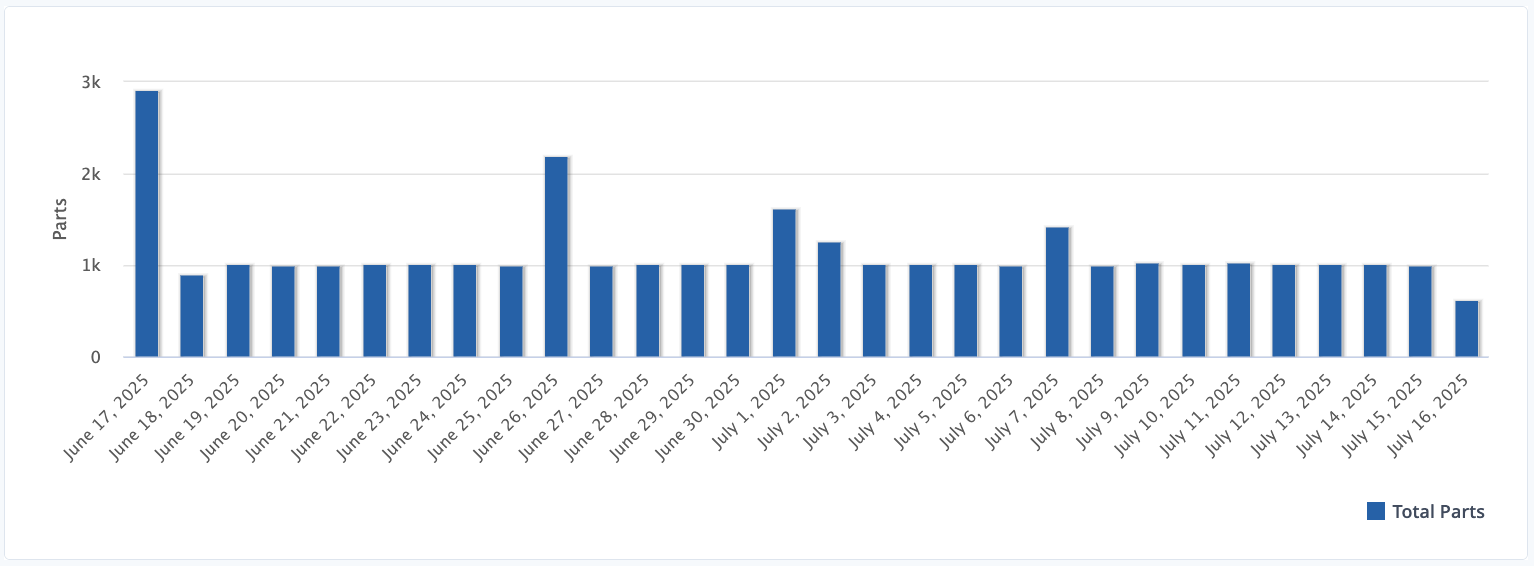The term Game Changer is defined as “a newly introduced element or factor that changes an existing situation or activity in a significant way”. And while the term is used loosely in many situations in life, when it comes to the Industrial Internet of Things, its hard to think of a term that better describes the effect this technology is having on manufacturing.
But just how are these changes occurring? And what is the depth of the effects on manufacturing? Here are a few of the ways that Industrial IoT is indeed acting as a game changer:
Production Efficiency
The arrival of IoT to the industrial world means connected factories producing a wealth of data and the analytics to operationalize that data. Not since the lean movement of the latter part of the last century have we seen potential increases in productivity. And if early indications are any guide, the gains from IoT will exceed those of lean.
Already, factories utilizing IoT technology have realized as much as 20% and greater increases in efficiency. The ability to visualize data in real-time and drive decision making to a more precise level is a major factor in this. And the predictive capability of software analytics is moving the understanding of the production floor from one of being reactive to one of being proactive.
IoT also impacts every aspect of the shop floor. From the flow and handling of WIP to the autonomous increase or decrease of lot sizes to optimize changeover times, the nature of production is changing. IoT also impacts staff deployment decisions and energy usage and empowers operators to make informed decisions to drive value and improve productivity.
Maintenance Programs Industrial IoT is driving companies to a new way of thinking for maintenance as well. With embedded IoT devices and the data they deliver, advanced analytics can turn a lagging and reactive maintenance program into a dynamic program that drives value. Industrial IoT brings with it the ability to predict what needs to be done. These calculations can consider run schedules to notify technicians when a machine is down for regular changeovers. Notifications can be built into the system to proactively have the part pulled from stores and staged as well as automatically reorder replenishment parts without human intervention.
The same dramatic impact is seen with unscheduled maintenance as well. Previously, unscheduled maintenance could drag on because some problems required a diagnosis of the issue by a technician and a hunt for the offending part. The use of onboard sensors and edge devices can now narrow down the malfunction or in many cases, precisely identify its location. Studies have shown that when plants using IoT technology to drive predictive maintenance programs have seen an increase in productivity of as much as 25% or higher with a 25% reduction in maintenance costs as well.
Safety
All industries have potential hazards, and some carry the danger of catastrophic injury. It is estimated that worldwide,
317 million non-fatal hazards occur each year. Some of these events are caused by equipment failure with injury potential the result of shattered parts, heavy load failures or other mechanical issues. Others are caused by the products being manufactured such as chemical spills, toxic material and other material that may be dangerous in a semi-processed state. The deployment of Industrial IoT technology within a factory can greatly improve safety throughout the entire facility.
Software systems and devices for these deployments include advanced and intuitive operator interfaces as well as the capability for managers and other decision makers to log in and view as well. When it comes to safety, the real-time ability to see danger approaching can lead managers and staff to affect quicker response to the hazards.
Cost Improvement
The use of IoT technology in manufacturing can reduce labor and maintenance cost. It can also lower cost through reduced waste and improved uptime. But the cost improvement doesn’t stop there. Connected equipment has the potential to extend the life of older equipment retrofitted with devices and connectivity. This factors into the cost structure of the product as well and increases profit margin.
So too can IIoT improve inventory and save money on the supply chain and logistics. With real-time supply chain data, factories can expect less downtime because of shortages. Either the shortage can be avoided altogether, or it can be managed to prevent its impact on the operation.
Energy Consumption Overhead in the form of energy cost can be a drain on any company. With IoT technology,
smart metering can monitor oil, gas, water and electricity. And with the advanced analytics capability that comes with IIoT systems, recommendations can be made to reduce those costs. For example, if in the monitoring of these resources, the system identifies certain lots or production runs that utilize more power, the system may schedule those to run at a time during the late night when overall power consumption in the grid is lower and the demand and cost are lower as well.
It is estimated that 60% of global manufacturing companies will use connected device data for analysis in the coming year. And data indicates that Industrial IoT will see an overall increase in productivity for supply chain and logistics of up to 15%. This is on top of gains made on the shop floor and in maintenance. With investment in manufacturing IoT expected to exceed $70 billion by 2020 and as the number of installed devices prepares to pass one billion within the next two years, the arrival of the IIoT has amazing potential for improved cost, higher efficiency, greater ROI on production equipment and many other benefits. But more importantly, it is not only affecting the ability to improve performance. It is changing how manufacturing is conducted and how it is perceived, truly changing the game for everyone.


.png?width=1960&height=1300&name=01_comp_Downtime-%26-Quality_laptop%20(1).png)










Comments